Citrus Fruits: 25 Varieties To Try With Benefits & Recipes
Weight loss and glowing skin are some of the many benefits of eating these delectable fruits.

Image: ShutterStock
The myriad benefits of citrus fruits and their nutrient-rich profile make them a much sought-after food. They are a perfect mix of sour and sweet flavors resulting in a heavenly tangy, zesty, and flavorful taste. If mangoes are referred to as the “king” of fruits, citrus fruits definitely form the royal court. In this article, we bring you a list of 25 delicious citrus fruits you must try, their health benefits, a few easy recipes to make, and more. Keep scrolling!
There are only three original species of citrus fruits – mandarin orange, pummelo, and citron. All the other citrus fruits we see in stores and at farmers’ markets today are actually products of crossing these original species. Yes, this includes the common sweet oranges, lemons, and limes! Mind-blowing, isn’t it?
There are many more amazing things about citrus fruits that you are not yet aware of, and they will completely blow your mind. But before we delve into that, let’s look at all the types of citrus fruits, including hybrid fruits, that you can get your hands on.
In This Article
List Of Citrus Fruits
Here are some popular varieties of citrus fruits (1):
- Sweet oranges: Blood orange, kumquat, navel, cara cara
- Mandarins: Clementine, tangerine, tangelo, calamondin
- Limes: Key lime, Persian, kaffir
- Grapefruit: White, ruby red, oroblanco
- Lemons: Meyer, eureka
- Other kinds: Citron, yuzu, ugli, Rangpur, pomelo, Buddha’s hand, kinnow
1. Orange
The beloved orange that is readily available around the world is actually a hybrid between a pomelo and a mandarin (2). This sweet fruit grows in tropical and subtropical climates and has been around longer than Christianity as it has been mentioned in Chinese literature dating all the way back to 314 BC! The fruit is consumed fresh, juiced, and used in jams, marmalades, and desserts. Its zest and peels are used in baking, flavoring, and making essential oils.

- Botanical Name: Citrus sinensis
- Origin: Southern China, Northeastern India, and Southeast Asia
- Preferred Zones: Zones 9-11
- Size Of Tree: 30-33 feet
- Exposure: Full sun
- Soil: Slightly acidic to neutral soil with good drainage
2. Tangerine
The trusty ol’ tangerine is believed to be a variety of another citrus fruit, the mandarin orange. The fruit has been cultivated in Asian countries, like China and Japan, for over 3,000 years. It is named after a port in Morocco called Tangier, from where the fruit was first shipped to Europe and the United States.
It is much sweeter than a regular orange and is used in preparing a bunch of drinks, desserts, salads, and other dishes. Tangerine peels are so delicious that they are also eaten coated in chocolate!
- Botanical Name: Citrus tangerina
- Origin: Morocco
- Preferred Zones: Zones 9-10
- Size Of Tree: 8-10 feet
- Exposure: Full sun
- Soil: Slightly acidic to neutral loamy soil with good drainage
3. Key Lime
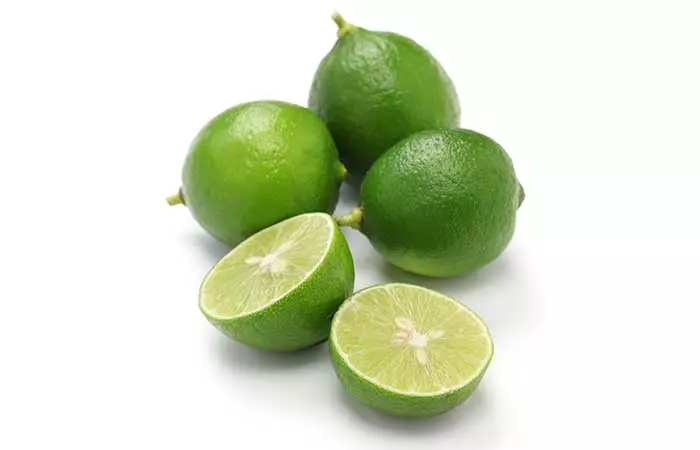
Who hasn’t experienced the slice of heaven that is key lime pie? The name of the fruit comes from its association with the Florida Keys, where it is used as a flavoring ingredient in key lime pie. This delicious fruit is also known as Mexican lime and West Indian lime (3). Besides the fruit has a sweet flavor, the flowers that bloom with it are also super pretty off-white with a delicate purple tinge at the edges. Apart from key lime pie, the fruit is also used in marinades, dressings, cocktails, and refreshing beverages.
- Botanical Name: Citrus aurantiifolia
- Origin: Southeast Asia
- Preferred Zones: Zones 9-10
- Size Of Tree: 16 feet
- Exposure: Full sun, protected from cold winds
- Soil: Well-drained, slightly acidic to neutral broken rocky soil
4. Clementine
I’m sure you must have spent some part of your childhood being taught the ubiquitous song Oh My Darlin’ Clementine. Well, this classic also features one of the most commonly found citrus fruits out there. Clementine is a natural hybrid that was discovered by a French missionary, Brother Clément Rodier, in his garden in Misserghin, Algeria in the late 19th century. The sweet citrus fruit is a cross between a mandarin orange and a sweet orange. It has less acid than a sweet orange and is often confused with mandarin orange (4). The fruit is often eaten fresh or used in fruit salads and desserts.
- Botanical Name: Citrus clementina
- Origin: Algeria
- Preferred Zones: Zones 9-11
- Size Of Tree: 25 feet
- Exposure: Full sun
- Soil: Well-drained soil
 Trivia
Trivia5. Blood Orange
Blood orange has quite the fitting moniker considering its flesh is a very distinctive dark red.
This is because it contains unique antioxidants called anthocyanins that are not found in any other citrus fruits (5). Another feature that sets it apart from its other citrus counterparts is that it has a distinct raspberry flavor to it in combination with the usual citric flavor. It is consumed fresh, juiced, or used in cocktails, sorbets, and sauces. The fruit is a staple in Mediterranean cuisine and is used in both sweet and savory recipes.
- Botanical Name: Citrus sinensis
- Origin: China
- Preferred Zones: Zones 9-10
- Size Of Tree: 15 feet
- Exposure: Full sun
- Soil: Slightly acidic, well-drained loamy soil
6. Mandarin Orange
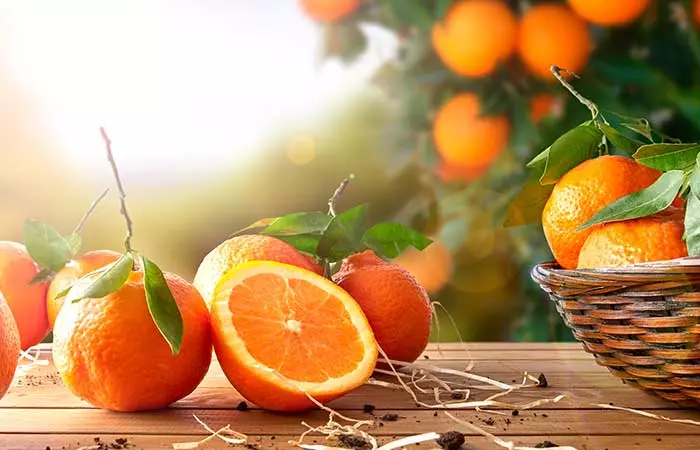
The mandarin orange is a citrus fruit that closely resembles the more common sweet orange. This sweet citrus fruit holds a special place in Chinese medicine and Ayurveda for treating abdominal, digestion, and phlegm-related issues (6). Mandarin oranges are also traditional symbols of abundance and are thus presented and displayed during the Chinese New Year. They are usually enjoyed fresh and used in salads. They are a key ingredient in many Asian recipes, including desserts, chicken, and pork.
- Botanical Name: Citrus reticulata
- Origin: China
- Preferred Zones: Zones 9-10
- Size Of Tree: 8-10 feet
- Exposure: Full sun
- Soil: Well-drained loamy soil
7. Lemon
Who doesn’t know the joy of having a glass of citrusy cold lemonade on a hot summer day? Owing to its unique sour taste, lemon is a citrus fruit that is used in preparing food and refreshing drinks all over the world. Additionally, its high citric acid content makes it a strong cleaning agent, and its essential oil is used in aromatherapy for relaxation (7). Lemon is also used in cooking, baking, and salad dressings. Historically, lemons were used by sailors to prevent scurvy due to their high vitamin C content (8).
- Botanical Name: Citrus limon
- Origin: Southeast Asia
- Preferred Zones: Zones 9-10
- Size Of Tree: 10-20 feet
- Exposure: Full sun
- Soil: Acidic, well-drained, loamy soil
8. Grapefruit
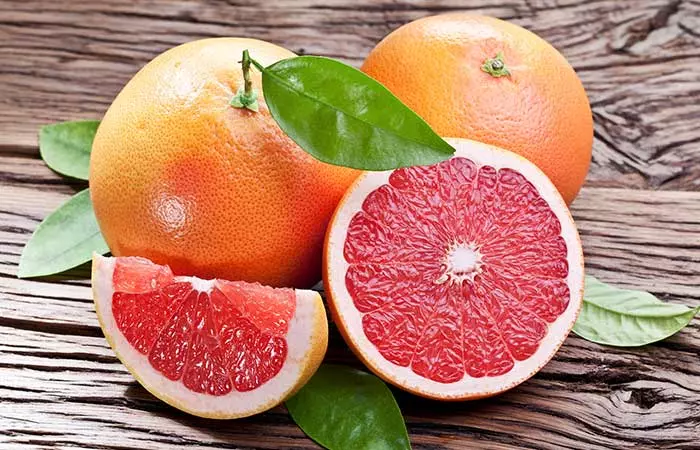
The grapefruit boasts of a unique flavor profile that ranges from sour to semi-sweet to bitter notes. It’s a cross between two other citrus fruits – sweet orange and pomelo (9). This citrus fruit gets its name from the way it grows in bunches that resemble grapes. The flesh of this beautiful fruit can come in red, white, or pink hues, depending on its cultivars. Grapefruits are eaten fresh, juiced, or added to fruit salads and cocktails.
- Botanical Name: Citrus paradisi
- Origin: Barbados
- Preferred Zones: Zones 9-11
- Size Of Tree: 16-20 feet
- Exposure: Full sun
- Soil: Well-drained soil
 Fun Fact
Fun Fact9. Meyer Lemon
The Meyer lemon is named after the American agricultural explorer Frank Nicholas Meyer, who first sampled and brought this citrus fruit to the US from China. It’s a cross between a lemon and a mandarin orange (10). Though first used as an ornamental tree in China, this fruit found its way into cooking, thanks to popular chefs like Alice Waters and Martha Stewart. The fruit has a sweeter, less acidic flavor and is used in baking, lemonades, marmalades, and cocktails.
- Botanical Name: Citrus meyeri
- Origin: China
- Preferred Zones: Zones 9-10
- Size Of Tree: 6-10 feet
- Exposure: Full sun
- Soil: Slightly acidic, well-drained, loamy soil
10. Kaffir Lime
Kaffir lime (also known as makrut lime) is a citrus fruit that features quite prominently in Southeast Asian cuisine (11). In fact, its leaves are used way more than the fruit in preparing Thai, Cambodian, Vietnamese, and Indonesian dishes. Kaffir lime juice is also used as a shampoo in this region and is believed to kill head lice. The fruit is believed to ward off evil spirits and negativity in Thai culture. Due to this, it is often used in traditional Thai weddings and house-blessing ceremonies.
- Botanical Name: Citrus hystrix
- Origin: Tropical Asia
- Preferred Zones: Zones 9-11
- Size Of Tree: 6 to 35 feet
- Exposure: Full sun
- Soil: Well-drained, loamy soil
11. Tangelo
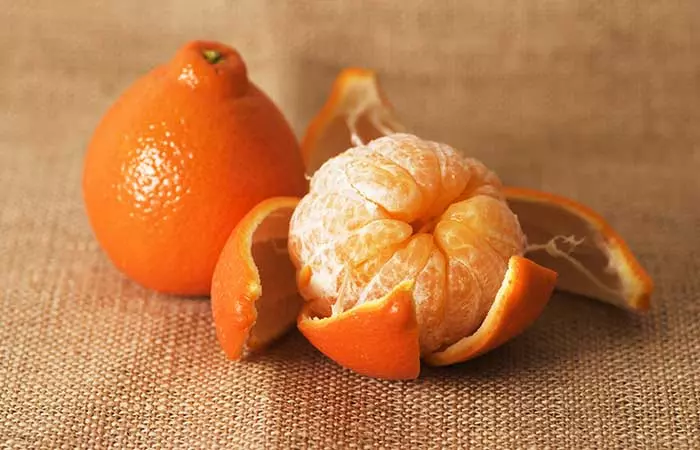
Tangelo is a citrus fruit that is a cross between a tangerine and a pomelo or grapefruit (12). It is extremely juicy and has a mildly sweet flavor. This sweet flavor makes it possible for tangelos to be used as a substitute for sweet oranges and mandarin oranges in drinks and dishes. The fruit is primarily grown in Jamaica but also found in regions with warm climates and fertile soil, such as Florida.
- Botanical Name: Citrus tangelo
- Origin: USA
- Preferred Zones: Zones 9-10
- Size Of Tree: 8-12 feet
- Exposure: Full sun
- Soil: Well-drained, slightly acidic soil
12. Kumquat
Kumquat (the name just rolls off your tongue, doesn’t it?) is very similar to a sweet orange but is much smaller in size and more resistant to cold weather (13). This juicy citrus has many more variants like the Morgani (round) kumquat, Nagami (oval) kumquat, Jiangsu kumquat, and the Centennial Variegated kumquat. Unlike most citrus fruits, the kumquat is eaten whole, including its peel that has a sweet flavor. This fruit is also used in marmalades, preserves, and cocktails.
- Botanical Name: Citrus japonica
- Origin: South Asia and Asia Pacific region
- Preferred Zones: Zones 9-11
- Size Of Tree: 8 to 15 feet
- Exposure: Full sun
- Soil: Well-drained soil
13. Persian Lime
Persian lime is the most widely cultivated lime species and is a hybrid between a key lime and a lemon (14). It was first grown in Persia, modern-day Iran. The unique features that make it great for commercial cultivation are that it is seedless, has a longer shelf life, is bigger than the key lime, and its bushes have no thorns. However, it is less acidic and has a less bitter taste than key lime. It is used in beverages, marinades, and Persian cooking.
- Botanical Name: Citrus latifolia
- Origin: Persia (now Iran)
- Preferred Zones: Zones 9-10
- Size Of Tree: 15 to 20 feet
- Exposure: Full sun
- Soil: Well-drained soil
14. Sweet Lime
Sweet lime is a cultivar of lemon and is immensely popular in South Asia. It has a very mild, sweet flavor and is low in acid content (15). Sweet lime is most commonly consumed in its juice form and is the most common fruit drink found in India, Pakistan, and Bangladesh.
- Botanical Name: Citrus limetta
- Origin: South and Southeast Asia
- Preferred Zones: Zones 9-11
- Size Of Tree: 26 feet
- Exposure: Full sun
- Soil: Slightly acidic, well-drained soil
15. Pomelo
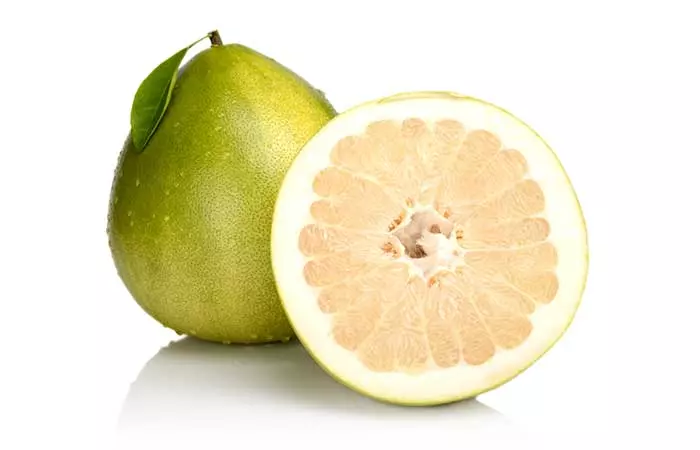
Pomelo (or pummelo/pamplemousse/jabong/shaddock – this fruit has way too many names!) is one of the three original citrus species from which the rest of the citrus fruits hybridized. Pomelo has a number of health benefits. The white-fleshed pomelo is sweet while the pink-fleshed one is sour (16). The fruit can be eaten fresh, used in salads, or incorporated into desserts. Pomelos are also eaten in Asia during the Mooncake festival.
- Botanical Name: Citrus maxima
- Origin: South and Southeast Asia
- Preferred Zones: Zones 9-10
- Size Of Tree: 25 feet
- Exposure: Full sun
- Soil: Well-drained, loamy soil
16. Yuzu
Yuzu is a highly aromatic citrus fruit that looks a lot like a small grapefruit. The interesting thing about yuzu is that it is rarely consumed as a fruit (17). Yuzu juice is used in the preparation of ponzu sauce, yuzu vinegar, yuzu tea, and some alcoholic drinks. The Yuzu fruit also comes with many benefits. Yuzu is also added to traditional baths during the winter to promote relaxation and ward off colds (18).
- Botanical Name: Citrus junos
- Origin: Central China and Tibet
- Preferred Zones: Zones 9-11
- Size Of Tree: 12 to 18 feet
- Exposure: Full sun
- Soil: Well-drained soil
17. Ugli Fruit

This fruit may sound ugli and look ugly, but it sure is one delicious citrus fruit. Ugli fruit was first discovered in Jamaica growing in the wild in 1924. It is a natural hybrid created by crossing a grapefruit, an orange, and a tangerine. This super juicy fruit is sweet like a tangerine, less bitter than a grapefruit, and has a very aromatic rind. It is eaten fresh or used in juices, jams, and fruit salads due to its juicy and mildly sweet nature.
- Botanical Name: Citrus reticulata × Citrus paradisi
- Origin: Jamaica
- Preferred Zones: Zones 9-11
- Size Of Tree: 6 to 8 feet
- Exposure: Full sun
- Soil: Well-drained, slightly acidic soil
18. Citron
And we’re back to one of the original citrus fruit species with citron! This dry, pulpy fruit is used to make jams and pickles in South Asia. According to anecdotal evidence, citrons may serve a variety of medicinal purposes, like helping manage nausea, hemorrhoids, and skin diseases and ejecting parasitic worms from the body (19).
- Botanical Name: Citrus medica
- Origin: Southeast Asia
- Preferred Zones: Zones 9-10
- Size Of Tree: 8 to 15 feet
- Exposure: Full sun
- Soil: Well-drained, loamy soil
19. Rangpur
A hybrid between mandarin orange and lemon, rangpur is named so after Rangpur in Bangladesh, where it is found in abundance. Due to their high acid content, rangpurs are used as a substitute for lime while cooking.
- Botanical Name: Citrus limonia
- Origin: Southeast Asia
- Preferred Zones: Zones 9-11
- Size Of Tree: 12 to 18 feet
- Exposure: Full sun
- Soil: Slightly acidic, well-drained, loamy soil
20. Finger Lime
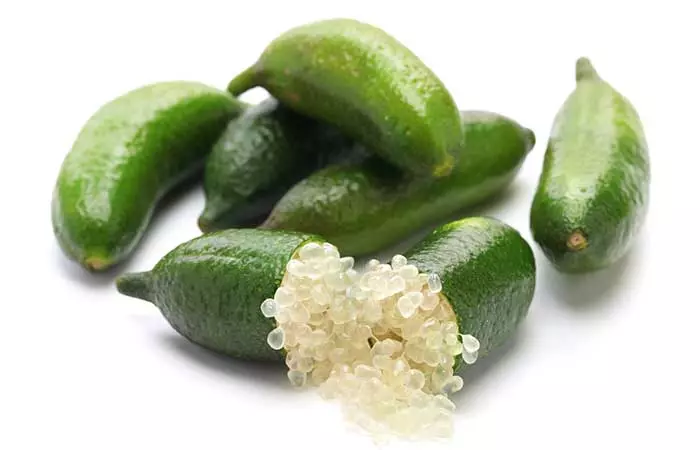
The finger lime, as the name suggests, looks like an elongated lime. Its juicy vesicles are used as garnish in various dishes and are referred to as ‘lime caviar.’ Finger lime has a tangy flavor that makes it perfect for making pickles and marmalade. But that’s not all! Its peel is also dried and used as a spice.
- Botanical Name: Citrus australasica
- Origin: Australia
- Preferred Zones: Zones 9-11
- Size Of Tree: 20 feet
- Exposure: Full sun
- Soil: Well-drained soil
21. Bitter Orange
As you may be able to tell by the name, bitter orange is a very bitter flavored variety of citrus fruit. It’s a cross between a pomelo and a mandarin orange (20). The world-renowned British marmalade is made using bitter orange. It is widely used in preparing Turkish cuisine and is also known to act as a dietary supplement as it suppresses your appetite (21). The fruit spread from Southeast Asia to the Islamic world around 700 AD, traveling through India and Iran during the Arab Agricultural Revolution.
- Botanical Name: Citrus aurantium
- Origin: Southeast Asia
- Preferred Zones: Zones 9-10
- Size Of Tree: 30 feet
- Exposure: Full sun
- Soil: Well-drained, slightly acidic, loamy soil
22. Buddha’s Hand
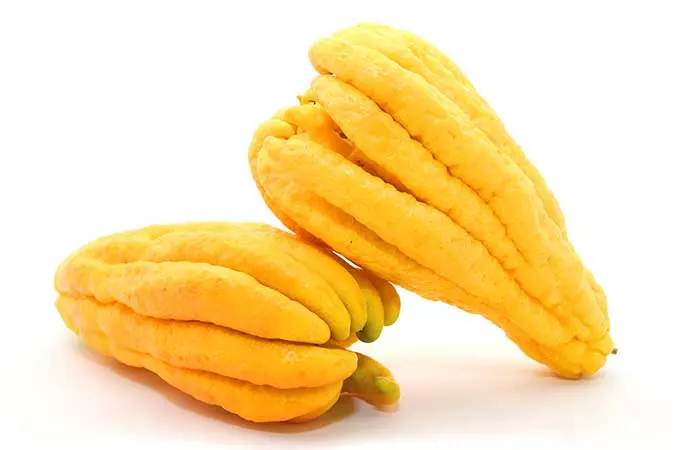
When it comes to oddly shaped fruits, Buddha’s hand sure does top the list. This unique fruit is believed to have originated in Northeastern India or Western China. It is divided into finger-like segments (22). Due to its lack of pulp or juice, only its zest is used in preparing desserts, dishes, and alcoholic drinks.
- Botanical Name: Citrus medica var. sarcodactylis
- Origin: Northeastern India and China
- Preferred Zones: Zones 9-11
- Size Of Tree: 10 to 17 feet
- Exposure: Full sun
- Soil: Well-drained soil
 Trivia
Trivia23. Calamondin
A cross between a mandarin orange and a kumquat, calamondin is a small citrus fruit that is rarely consumed by itself owing to its sour taste (23). The fruit is also known as the Philippine lime or Philippine lemon and is cultivated predominantly in the Philippines, Indonesia, and Malaysia. Its juice is used as a seasoning and condiment in Asian cuisines, and the fruit itself can be used to make marmalade.
- Botanical Name: Citrofortunella microcarpa
- Origin: South Asia
- Preferred Zones: Zones 9-10
- Size Of Tree: 10 to 20 feet
- Exposure: Full sun
- Soil: Well-drained, slightly acidic soil
24. Kinnow
Kinnow is a delicious citrus fruit that is a cross between the citrus cultivars of ‘King’ and ‘Willow Leaf.’ Due to its high seed content acting as a hindrance during consumption, it is believed that a low-seed variety of kinnow was developed in 2015 by Pakistani agriculturalist Niaz Ahmad Chaudhry. The fruit can be consumed fresh, juiced, or used in various culinary applications. Its peels are also used to make candies.
- Botanical Name: Citrus nobilis x Citrus deliciosa
- Origin: Pakistan and India
- Preferred Zones: Zones 9-11
- Size Of Tree: 8 to 12 feet
- Exposure: Full sun
- Soil: Well-drained soil
25. Sudachi
Sudachi is a tiny, round, and green citrus fruit with centuries of cultivation history in Japan. It is a cross between yuzu and other citrus varieties similar to the tachibana orange or koji. It is a highlight of the Tokushima protectorate in Japan and is used as a flavoring substitute for limes or lemons, rather than being consumed as a fruit. It is said to be the best condiment to enjoy the matsutake mushroom with, as claimed by locals. However, it makes a significant part of their everyday cuisine too.
- Botanical Name: Citrus sudachi
- Origin: Japan
- Preferred Zones: Zones 9-10
- Size Of Tree: 10 to 15 feet
- Exposure: Full or part sun
- Soil: Well-drained mix of clay and sand
But here’s the best part –If you are wondering what are citrus fruits famous for other than their tangy taste and flavor, the answer is the array of health benefits they offer.
These wide varieties of citrus fruits that you can get your hands on also means that you get an equally wide variety of health benefits.
Key Takeaways
- Oranges, sweet lime, grapes, lemons, and tangerines are commonly consumed citrus fruits.
- Regularly eating citrus fruits can boost your heart health and immunity, aid in digestion, and reduce the risk of cancer.
- You can consume citrus fruits raw or add them to your desserts or drinks.
What Are The Health Benefits Of Citrus Fruits?
- They aid weight loss as they have a high water and fiber content, which keeps you full for a long time (21). The fiber may also boost heart health and prevent cardiovascular disease (24).
- Citrus fruits can help reduce the risk of esophageal, stomach, and ovarian cancers (25).
- They reduce your risk of developing cataracts and age-related macular degeneration (26), (27).
- Citrus fruits are great for skin care. The vitamin C in citrus fruits helps regenerate collagen that maintains the elasticity of your skin. Hence, these fruits can help delay the signs of aging (28).
- They help reduce the overall duration of the common cold by a day (29).
Wondering where these benefits come from? They are a result of the rich nutritional profile of citrus fruits. Learn more about it below.
Nutritional Information Of Citrus Fruits
Citrus fruits are packed with phenolic compounds like flavonoids, phenolic acids, and coumarins that have rich antioxidant properties. These compounds help fight free radicals and reduce oxidative stress. The fruits also contain terpenoids, such as limonoids and carotenoids, that have anti-cancer and cholesterol-lowering properties. Additionally, citrus fruits are a fantastic source of dietary fiber, particularly pectin, which supports digestive health. They are also rich in essential nutrients like vitamins C and E, zinc, copper, selenium, iron, and manganese (30).
But wait a minute! While it sure is great that citrus fruits give you a wealth of nutrients, you need to keep in mind that you can obtain their benefits only if you select the right fruits at the market, store them properly, and eat them before they start rotting. Here’s what you need to do…
What Are Some Healthy Ways To Eat Citrus Fruits?
When it comes to taste, no fruit can beat the perfect blend of sweet, sour, and slightly bitter flavor notes of citrus fruits. You can simply peel and eat them out of hand, drink their freshly squeezed juice or incorporate them in a ton of healthy and simple recipes!
- When I watched The Jungle Book as a kid, I absolutely fell in love with the idea of plucking fruit straight off a tree and devouring it because of how delicious it looked when Mowgli did it. Now you may not have the option of picking your citrus fruits off a tree, but you sure can eat them the way God intended you to. Most citrus fruits also have the added advantage of having a loose peel that can be removed by hand and being naturally divided into bite-sized segments. So you don’t need to mess around with knives or forks! Eating citrus fruits this way also ensures that you don’t miss out any of the fiber and great nutrients that they pack. According to anecdotal reports, it is believed that the best time to eat citrus fruits is right in the morning with a glass of milk. And if you have diabetes, it is recommended that you consume all fruit (and other carbs) with other foods that contain fat and protein so as to mitigate the spike in blood sugar.
- For those of you who prefer drinking juices instead of eating fruits (like me!), freshly squeezed citrus fruit juices are going to be your new best friend. But don’t you dare strain out the pulp before chugging that juice! The pulp of citrus fruits contains fiber that has the all-important pectin that is responsible for getting rid of cholesterol from your body (31).
- Add peeled segments of any citrus fruits you like to your salad, a bowl of low-fat yogurt or chia seed pudding to add a dash of sweet and tangy freshness to an otherwise boring meal!
While these are some super simple ways to enjoy citrus fruits, you can also prepare some yummy dishes with them that will make you a hit with your family and friends. Below are just a few dishes that you can try out.
Recipes
1. Glazed Lemon Coconut Loaf

What You Need
For the loaf
- 1 cup powdered sugar
- 5 tbsp unsalted butter
- 3 tbsp vegetable oil
- 1 tsp vanilla extract
- 1 tsp lemon extract
- 1 1/2 tbsp grated lemon zest
- 1/4 cup milk
- 2 big eggs
- 3/4 cup buttermilk
- 2 1/2 cups all-purpose flour
- 2 1/2 tsp baking powder
- 1/2 tsp salt
- 1/2 sweetened desiccated coconut
- 9 x 5 inch loaf pan
- Parchment paper
For the glaze
- 1 cup powdered sugar
- 2 tbsp unsalted butter
- 2 tbsp lemon juice
- 1/4 tsp lemon extract
- A pinch of lemon zest
- 1/3 cup sweetened desiccated coconut
Directions
- Line your loaf pan with parchment paper and preheat your oven to 350°F.
- Melt the butter.
- In a bowl, mix the powdered sugar, melted butter, vegetable oil, lemon extract, vanilla extract, lemon zest, and milk. Whisk them together thoroughly.
- In another bowl, whisk the eggs and buttermilk.
- In another bowl, use a sieve to sift the flour, baking powder, and salt together.
- Add half of your flour mixture to the sugar mixture and stir with a wooden spoon until there are no lumps.
- Now, alternately add some of the flour mixture and some of the egg mixture to the previous mixture, stirring thoroughly between each addition until all your ingredients are combined in one bowl.
- Stir in the desiccated coconut into the batter.
- Pour your batter into the loaf pan and bake it for around 45 minutes, or until a skewer/butter knife/toothpick poked into the center comes out clean.
- Remove the loaf from the pan and place it on a cooling rack.
- To make the glaze, combine all the glaze ingredients (except for the desiccated coconut) and whisk the mixture until it reaches a thick consistency. You can adjust the consistency by adding more sugar (to thicken) or more lemon juice (to thin).
- Use a spoon to pour an even layer of glaze on top of your loaf and sprinkle some desiccated coconut on top of it to garnish it.
2. Citrus Tart

What You Need
- 1 1/2 cups Marie biscuits (crushed)
- 5 tbsp butter (melted)
- 2 tbsp demerara (brown) sugar
- 1/4 tsp powdered cinnamon
- 1 can sweetened condensed milk
- 1/3 cup chilled orange juice concentrate
- 1/4 cup freshly squeezed lemon juice
- 2 large eggs
- 1 cup heavy whipping cream
- 3 tbsp powdered sugar
- 9-inch tart pan with removable bottom
What To Do
- Mix the crushed biscuits, melted butter, brown sugar and cinnamon together in a bowl.
- Using a spoon, press this mixture tightly and in an even layer all along the base and sides of the tart pan.
- Separate the egg yolks and whites.
- Combine the condensed milk, orange juice concentrate, lemon juice, and egg yolk in a bowl and whisk them until they are completely blended.
- Beat your egg whites until they form stiff peaks (you could use an electric whisk to get the job done faster) and gently fold them into the condensed milk mixture using a spatula.
- Pour the mixture into the tart tin.
- Bake the tart for 20 to 25 minutes or until the filling is completely set.
- Let the tart cool down on a wire rack before chilling it in a fridge for about 4 hours.
- Remove the tart from the pan.
- Whisk the whipping cream and powdered sugar until stiff peaks form.
- Dollop the whipped cream along the edges of the tart or cover the top completely.
- You can garnish the tart with orange slices and mint sprigs to make it look pretty.
3. Citrus Mango Salsa

What You Need
- 1 blood orange
- 1 grapefruit
- 1 lime
- 1 ripe mango (peeled and chopped/sliced)
- 1 red bell pepper (seeded and diced)
- 3 tablespoons red onion (finely chopped)
- 1/2 jalapeno
- Salt (as desired)
Directions
- Preheat your oven to 325°F.
- Peel the blood orange and separate the segments.
- Cut between the membranes to release the blood orange segments from it and drop them in a bowl.
- Cut these segments into bite-sized chunks.
- Repeat the previous 3 steps with the grapefruit.
- Combine all the ingredients in a bowl, season with salt, and toss them together gently with a spoon.
Infographic: Other Health Benefits Of Citrus Fruits
Citrus fruits are a treasure trove of beneficial, natural nutrients. Although these sweet and sour fruits come in many varieties, they are nutritionally similar and offer important health benefits.
The infographic below summarizes the other numerous benefits you can achieve from these lovely citrus fruits, thanks to their rich nutritional profile. Check it out!
Some thing wrong with infographic shortcode. please verify shortcode syntax
Citrus fruits are nutrient-dense fruits with several therapeutic uses. They have a tangy taste with a mix of sweet and sour flavors. While Mandarin orange, pummelo, and citron are the three original species of citrus fruits, oranges, tangerine, key lime, grapefruit, and kaffir lime are some popular varieties. Their rich nutritional profile and antioxidant properties can offer many health benefits. Citrus fruits may aid weight loss, reduce the risk of stomach and ovarian cancers, delay the signs of aging, and decrease the duration of the common cold. You can eat them alone or try some delicious recipes with them. Include them in your diet to enjoy their benefits.
Frequently Asked Questions
What citrus fruit has the most vitamin c?
Among citrus fruits, orange has the most vitamin C (ascorbic acid) content with about 70 milligrams of vitamin C found in a single medium-sized orange.
Are grapes citrus?
No. Grapes are berries that grow on deciduous vines and belong to the genus Vitis. Though they do contain a small amount of citric acid, the main acids found in grapes are tartaric and malic acids.
Is tomato a citrus fruit?
No. Though tomatoes do contain citric acid in abundance, they are not considered citrus fruits because they grow on vine plants that belong to the genus Solanaceae.
Is pineapple considered a citrus fruit?
No. Only fruits that belong to the genus Rutaceae are considered to be citrus fruits. Pineapple belongs to the Ananas genus of plants. It is acidic and has a tangy flavor because it contains ascorbic acid, not the citric acid that is found in citrus fruits.
Why do citrus fruits conduct electricity?
Citrus fruits conduct electricity because they contain acid and water. When a metal comes in contact with acid, the metal’s atoms give up electrons. The water in citrus fruits, in turn, allows the electrons to flow through and conduct electricity (32).
How to freeze citrus fruits?
When it comes to freezing citrus fruits, there are a bunch of different ways you can go about it. You can leave them whole and unpeeled, or you can peel them and cut them in slices. If you want to wet pack them, put the fruits in a freezer safe jar and fill it up with water. Make sure you leave about an inch wide space on top to so that the jar doesn’t break when the water expands after freezing. You can also dry pack them by simply laying them on a tray covered with cookie paper. Once the fruits have frozen, simply pop them in a ziplock bag for easy storage.
Is apple a citrus fruit?
No, an apple is not a citrus fruit. Though they contain a very low percentage of citric acid in it, malic acid is the main acid found in apples. Another key point to note is that apples belong to the genus Rosaceae whereas citrus fruits are from the Rutaceae family of flowering plants.
Is cucumber a citrus fruit?
No, cucumber is not a citrus fruit. Unlike citrus fruits that belong to the genus Rutaceae, cucumbers are from the Cucurbitaceae family.
Are strawberries citrus fruits?
No, strawberries are not citrus fruits. They belong to the Rosaceae family of plants as opposed to the Rutaceae genus that citrus fruits belong to.
Illustration: Delicious Citrus Fruits, Recipes, And Their Benefits
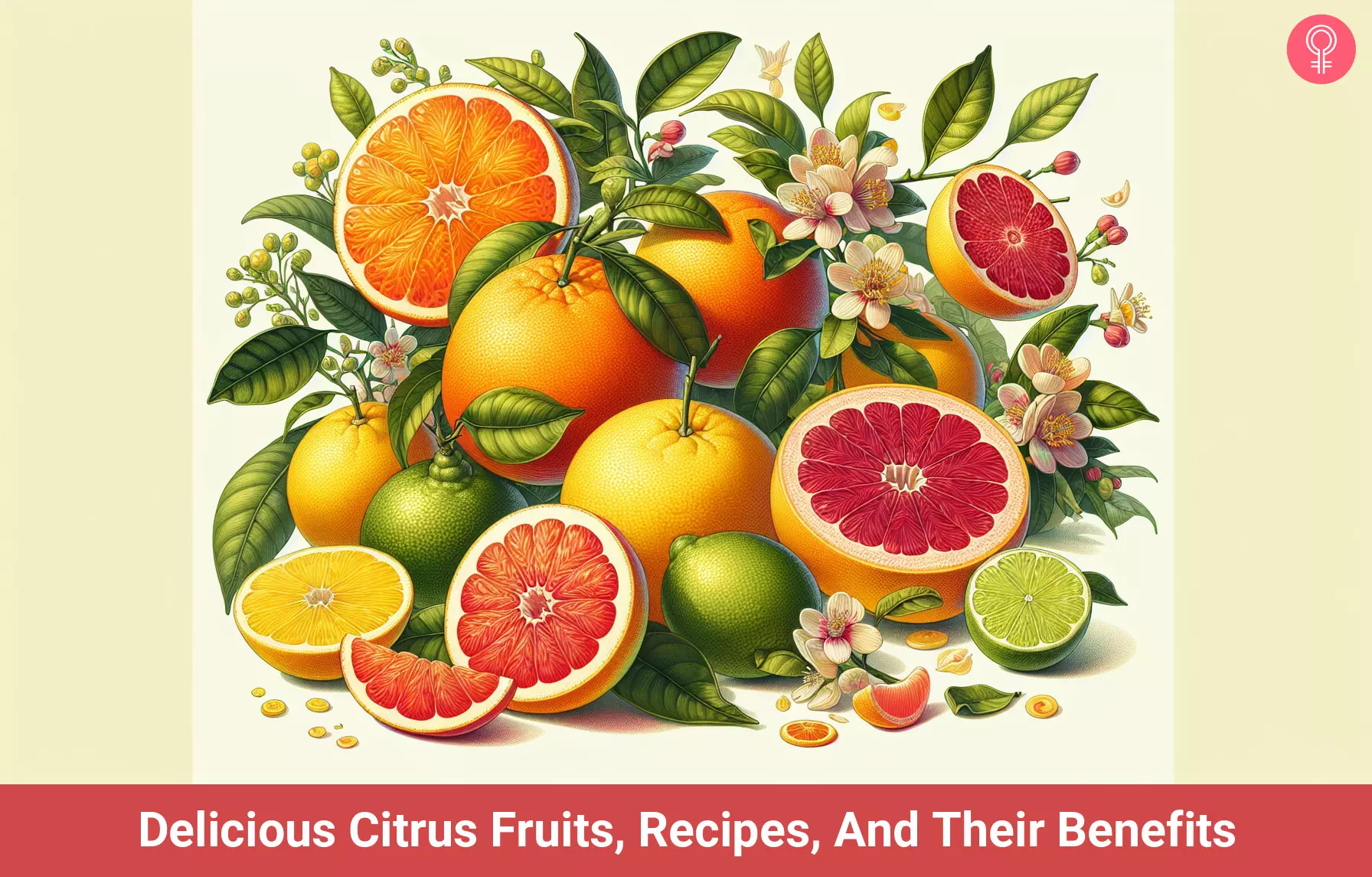
Image: Dall·E/StyleCraze Design Team
Explore the vibrant world of citrus fruits in this video. From sweet oranges to tart lemons, explore the unique flavors of these juicy fruits by clicking on this video.
References
Articles on StyleCraze are backed by verified information from peer-reviewed and academic research papers, reputed organizations, research institutions, and medical associations to ensure accuracy and relevance. Read our editorial policy to learn more.
- Citrus fruits as a treasure trove of active natural metabolites that potentially provide benefits for human health
https://www.ncbi.nlm.nih.gov/pmc/articles/PMC4690266/ - Citrus Taste Modification Potentials by Genetic Engineering
https://www.ncbi.nlm.nih.gov/pmc/articles/PMC6940753/ - Characterization of limes (Citrus aurantifolia) grown in Bhutan and Indonesia using high-throughput sequencing
https://www.ncbi.nlm.nih.gov/pmc/articles/PMC5381282/ - Plant growth yield and fruit quality of Clementine mandarin selections under subtropical climate in Brazil
https://www.researchgate.net/publication/326921113_Plant_growth_yield_and_fruit_quality_of_Clementine_mandarin_selections_under_subtropical_climate_in_Brazil - Characterization of Extra Early Spanish Clementine Varieties (Citrus clementina Hort ex Tan) as a Relevant Source of Bioactive Compounds with Antioxidant Activity
https://www.ncbi.nlm.nih.gov/pmc/articles/PMC7278874/ - Beta-cryptoxanthin plentiful in Japanese mandarin orange prevents age-related cognitive dysfunction and oxidative damage in senescence-accelerated mouse brain
https://pubmed.ncbi.nlm.nih.gov/21372377/ - Citrus limon (Lemon) Phenomenon—A Review of the Chemistry Pharmacological Properties Applications in the Modern Pharmaceutical Food and Cosmetics Industries and Biotechnological Studies
https://www.ncbi.nlm.nih.gov/pmc/articles/PMC7020168/ - Sailors’ scurvy before and after James Lind–a reassessment
https://pubmed.ncbi.nlm.nih.gov/19519673/ - Grapefruit: History Use and Breeding
https://www.researchgate.net/publication/351529354_Grapefruit_History_Use_and_Breeding - Regeneration and micropropagation of Meyer lemon (Citrus x meyeri) supported by polymorphism analysis via molecular markers
https://www.sciencedirect.com/science/article/abs/pii/S0304423821003320 - Antileukemic Cell Proliferation of Active Compounds from Kaffir Lime (Citrus hystrix) Leaves
https://www.ncbi.nlm.nih.gov/pmc/articles/PMC7144100/ - Tangelos
https://www.sciencedirect.com/topics/pharmacology-toxicology-and-pharmaceutical-science/tangelo - Kumquats
https://www.sciencedirect.com/topics/agricultural-and-biological-sciences/kumquats - Persian Lime
https://www.sciencedirect.com/topics/agricultural-and-biological-sciences/persian-lime - SWEET LIME (Citrus limettioides)
https://www.researchgate.net/publication/341932269_SWEET_LIME_Citrus_limettioides - Pomelo (Citrus maxima): The indigenous mega-citrus of South-EastAsia
https://www.researchgate.net/publication/332865208_Pomelo_Citrus_maxima_The_indigenous_mega-citrus_of_South-EastAsia - Citrus Junos
https://www.sciencedirect.com/topics/agricultural-and-biological-sciences/citrus-junos - Aromatic effects of a Japanese citrus fruit—yuzu (Citrus junos Sieb. ex Tanaka)—on psychoemotional states and autonomic nervous system activity during the menstrual cycle: a single-blind randomized controlled crossover study
https://pmc.ncbi.nlm.nih.gov/articles/PMC4839105/ - Anatomical and Physiological Responses of Citrus megaloxycarpa Lush.: a Cryptic Species of Northeast India
https://www.ncbi.nlm.nih.gov/pmc/articles/PMC8734548/ - An Overview on Citrus aurantium L.: Its Functions as Food Ingredient and Therapeutic Agent
https://www.ncbi.nlm.nih.gov/pmc/articles/PMC5954905/ - Safety Efficacy and Mechanistic Studies Regarding Citrus aurantium (Bitter Orange) Extract and p‐Synephrine
https://www.ncbi.nlm.nih.gov/pmc/articles/PMC5655712/ - Polyphenols Antioxidant Antibacterial and Biofilm Inhibitory Activities of Peel and Pulp of Citrus medica L. Citrus bergamia and Citrus medica cv. Salò Cultivated in Southern Italy
https://www.ncbi.nlm.nih.gov/pmc/articles/PMC6943604/ - Flavonoid compositions and antioxidant activity of calamondin extracts prepared using different solvents
https://www.researchgate.net/publication/262880451_Flavonoid_compositions_and_antioxidant_activity_of_calamondin_extracts_prepared_using_different_solvents - Frequency of Citrus Fruit Intake Is Associated With the Incidence of Cardiovascular Disease: The Jichi Medical School Cohort Study
https://www.ncbi.nlm.nih.gov/pmc/articles/PMC3899405/ - Anticancer Potential of Citrus Juices and Their Extracts: A Systematic Review of Both Preclinical and Clinical Studies
https://www.ncbi.nlm.nih.gov/pmc/articles/PMC5491624/ - Citric acid inhibits development of cataracts proteinuria and ketosis in streptozotocin (type1) diabetic rats
https://www.ncbi.nlm.nih.gov/pmc/articles/PMC2917331/ - Dietary Polyphenols in Age-Related Macular Degeneration: Protection against Oxidative Stress and Beyond
https://www.ncbi.nlm.nih.gov/pmc/articles/PMC6451822/ - Efficacy of Vitamin C Supplementation on Collagen Synthesis and Oxidative Stress After Musculoskeletal Injuries: A Systematic Review
https://www.ncbi.nlm.nih.gov/pmc/articles/PMC6204628/ - Effects of Citrus Fruit Juices and Their Bioactive Components on Inflammation and Immunity: A Narrative Review
https://www.ncbi.nlm.nih.gov/pmc/articles/PMC8264544/ - Bioactive compounds of citrus fruits: a review of composition and health benefits of carotenoids, flavonoids, limonoids, and terpenes
https://www.ncbi.nlm.nih.gov/pmc/articles/PMC8868476/ - Cholesterol-lowering properties of different pectin types in mildly hyper-cholesterolemic men and women
https://pubmed.ncbi.nlm.nih.gov/22190137/ - Electrochemical Energy Storage Electrodes via Citrus Fruits Derived Carbon: A Minireview
https://pubmed.ncbi.nlm.nih.gov/32212373/
Read full bio of Gabrielle Kane
Read full bio of Arshiya Syeda
Read full bio of Ravi Teja Tadimalla
Read full bio of Aparna Mallampalli






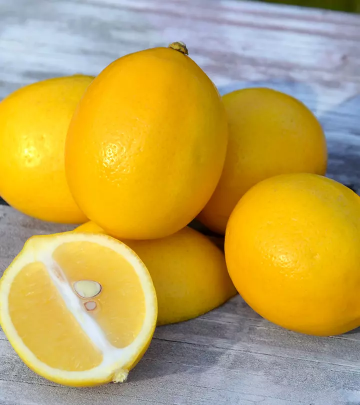
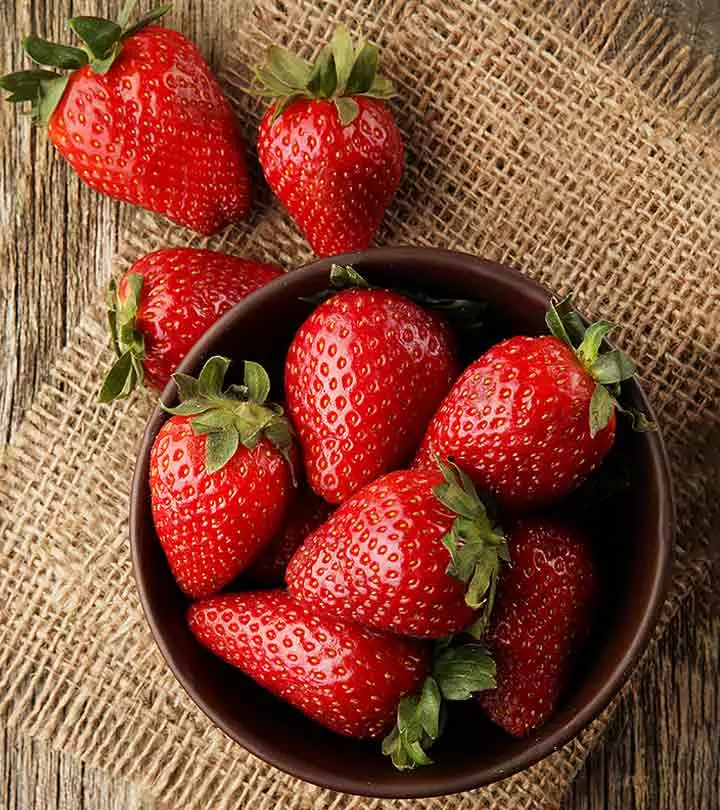
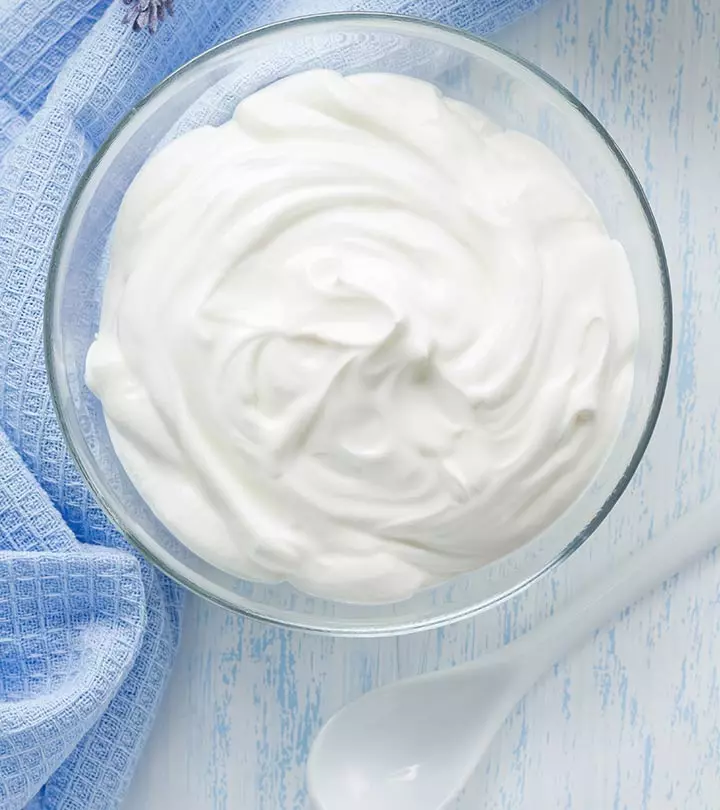
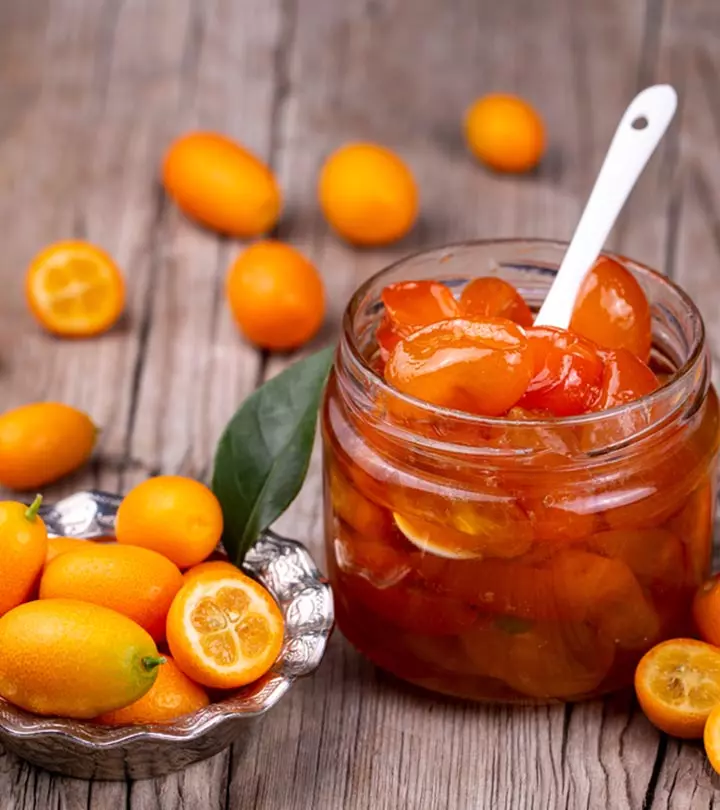
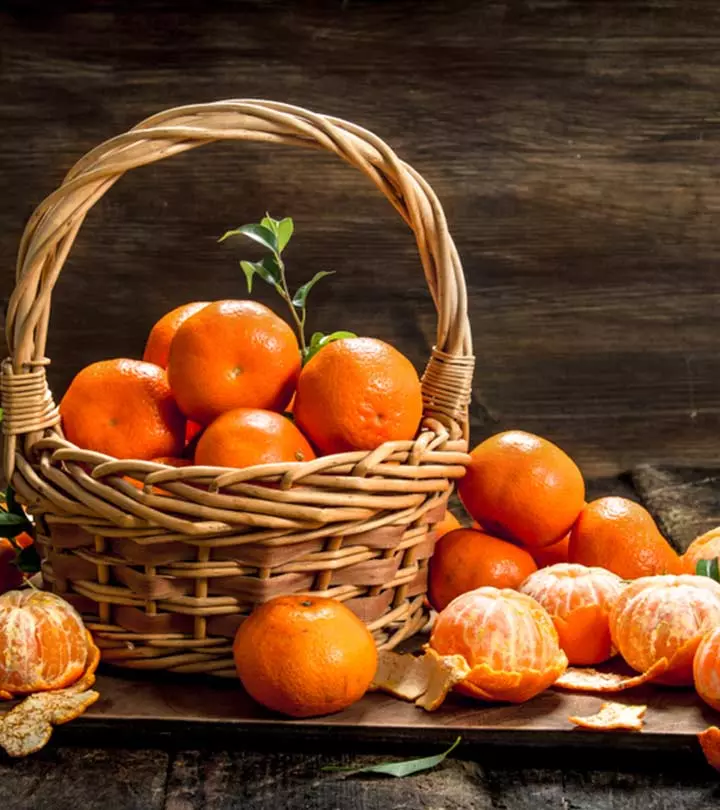
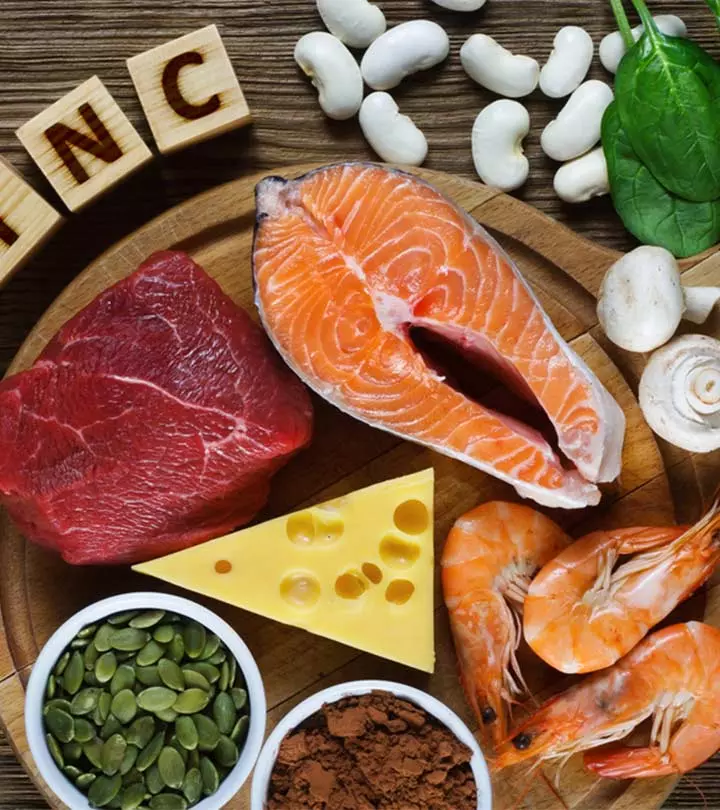
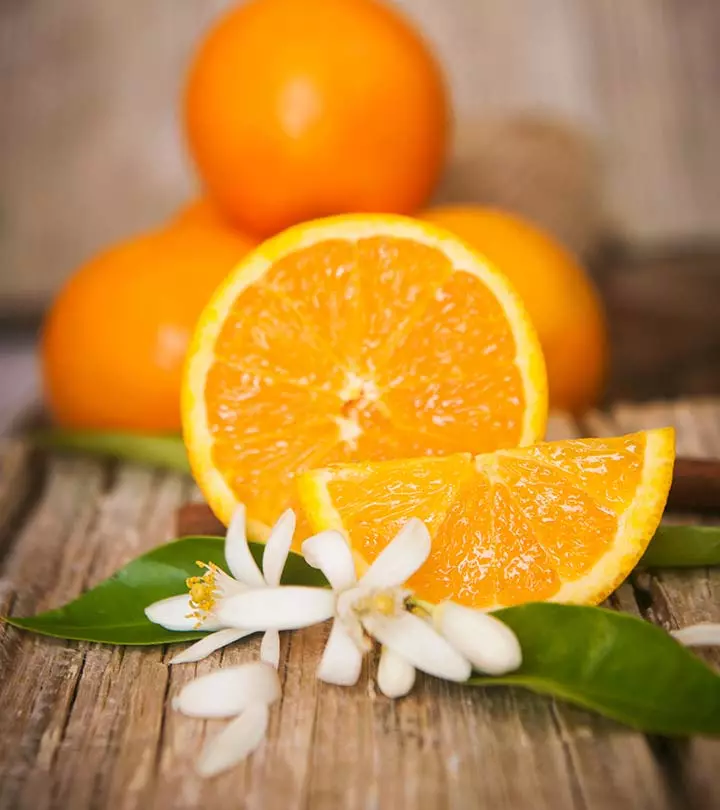
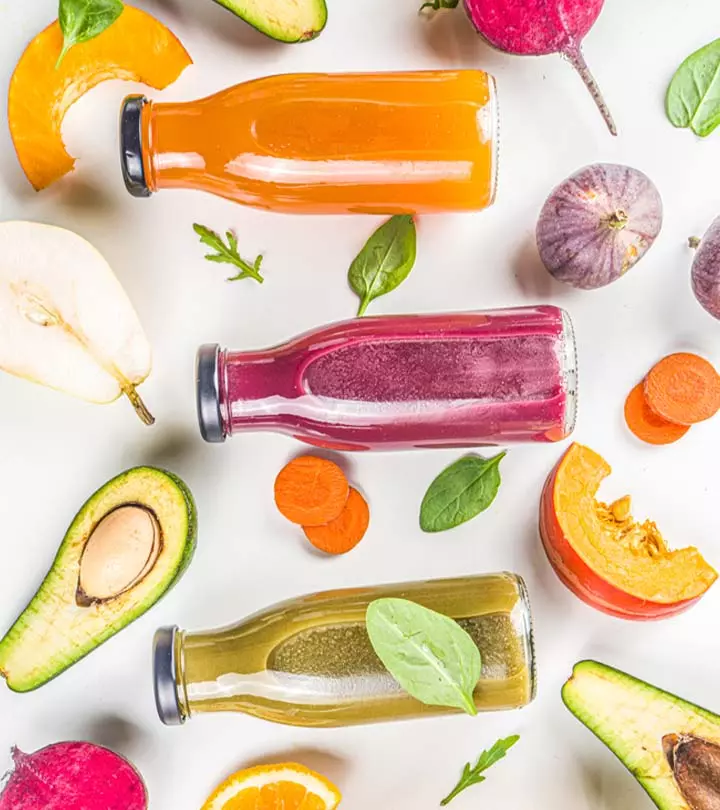
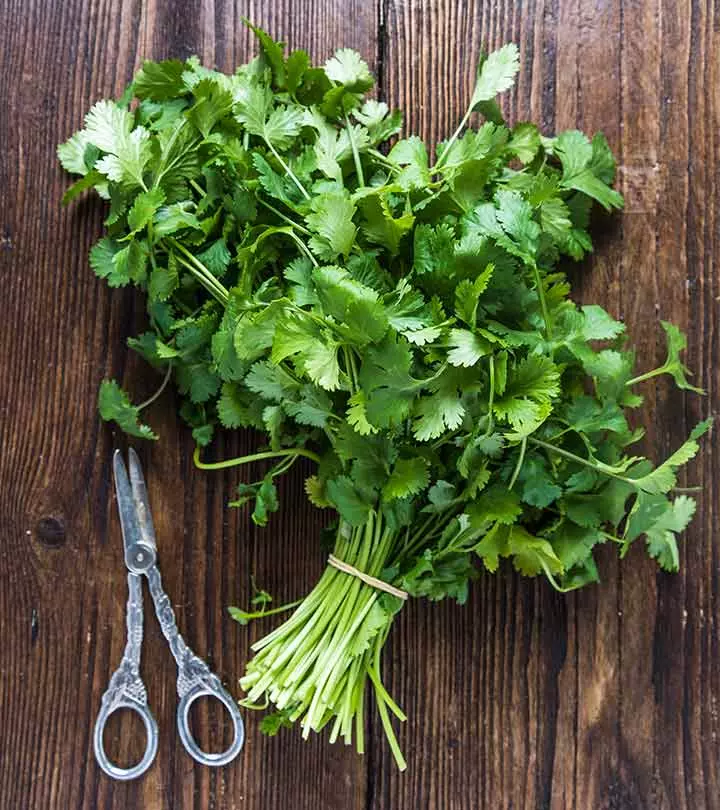

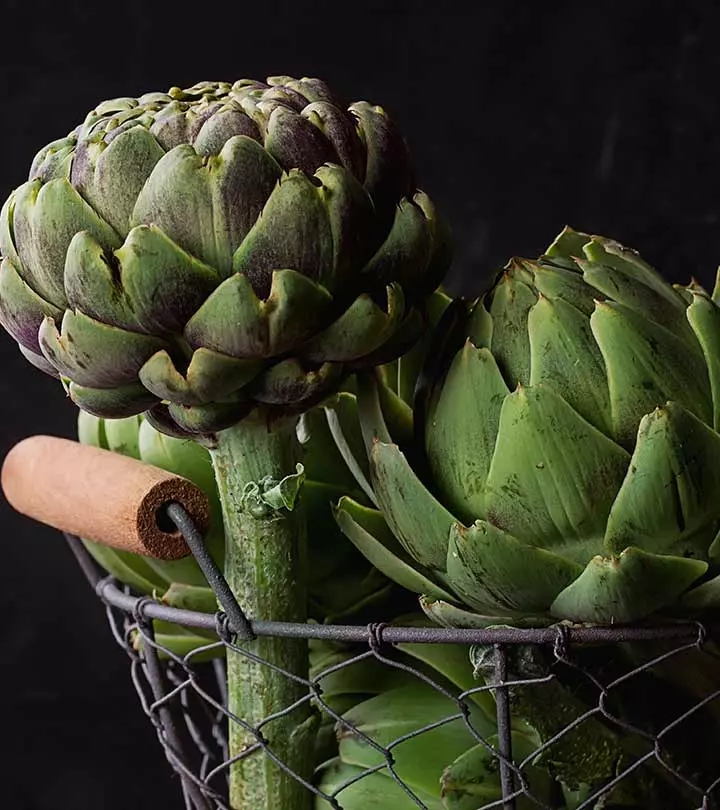


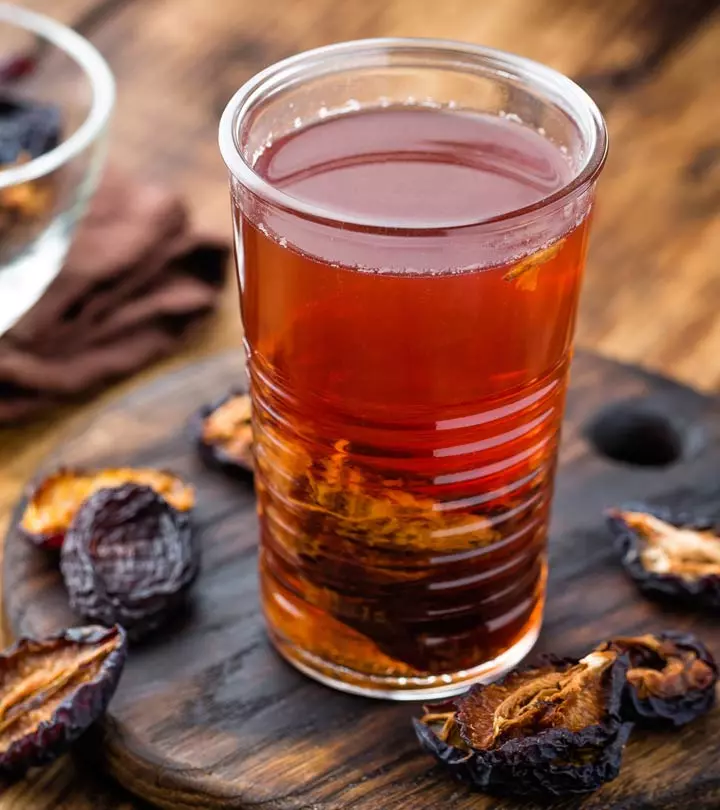
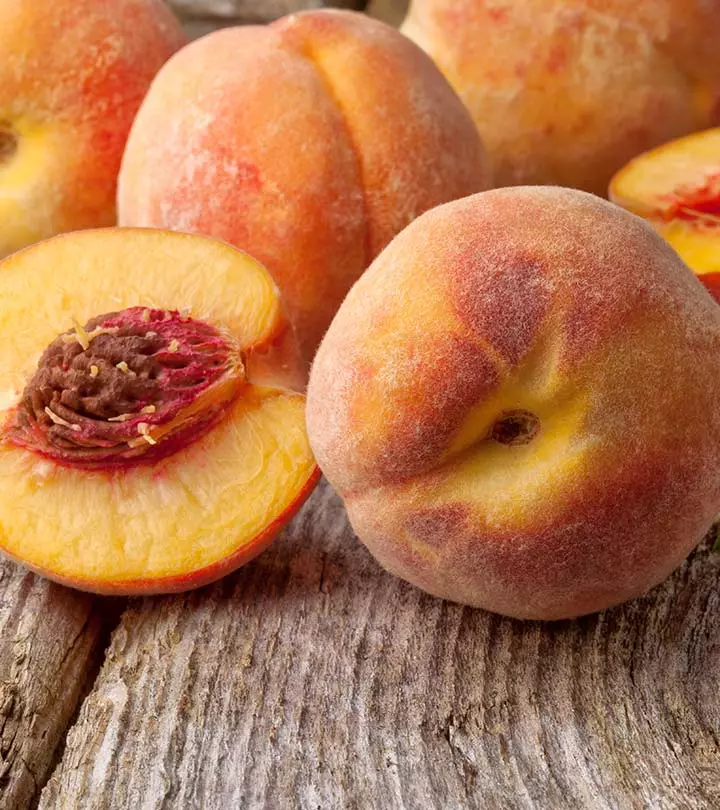
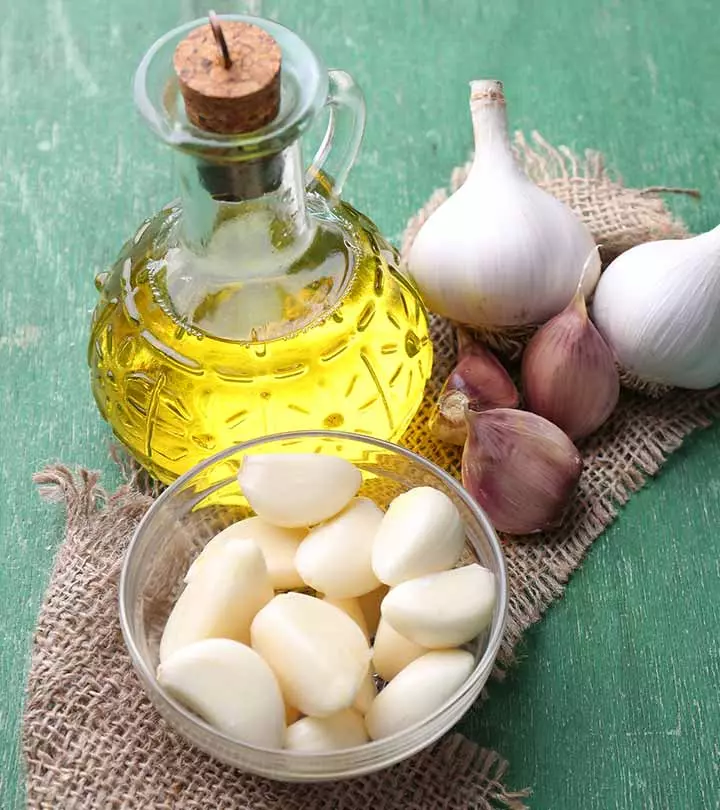
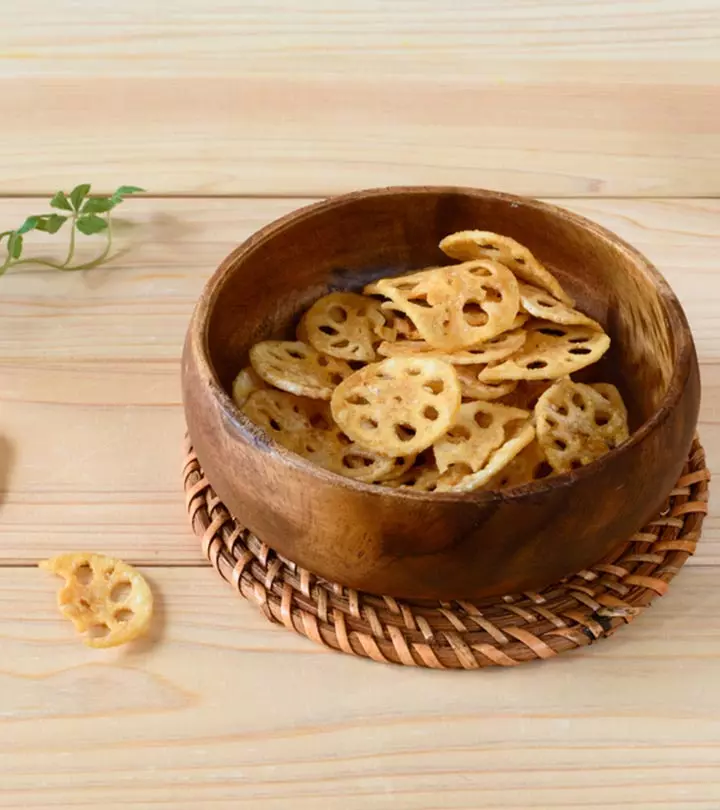
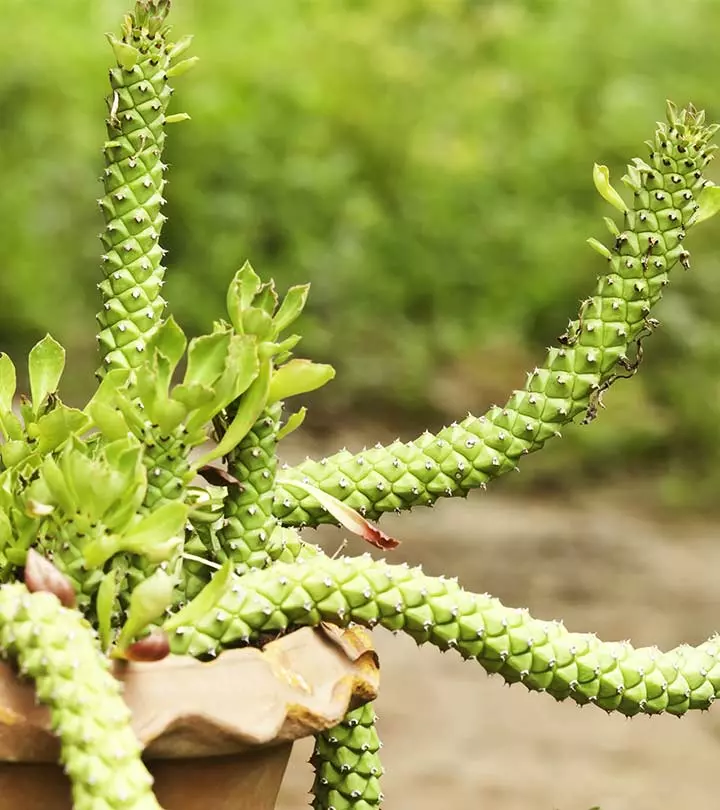
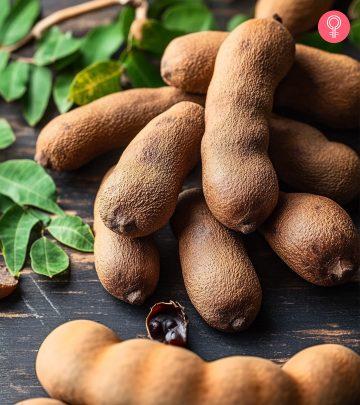
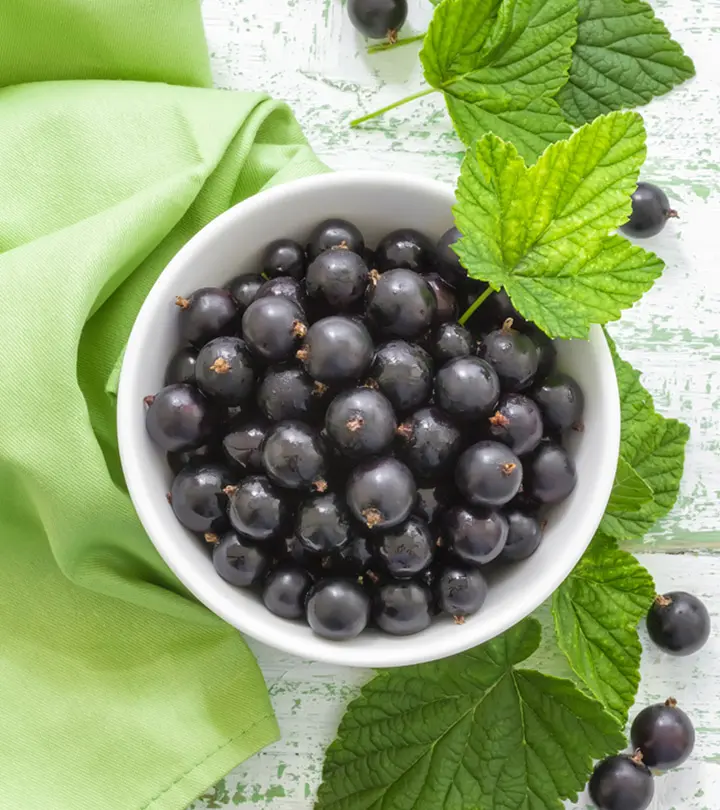
Community Experiences
Join the conversation and become a part of our empowering community! Share your stories, experiences, and insights to connect with other beauty, lifestyle, and health enthusiasts.